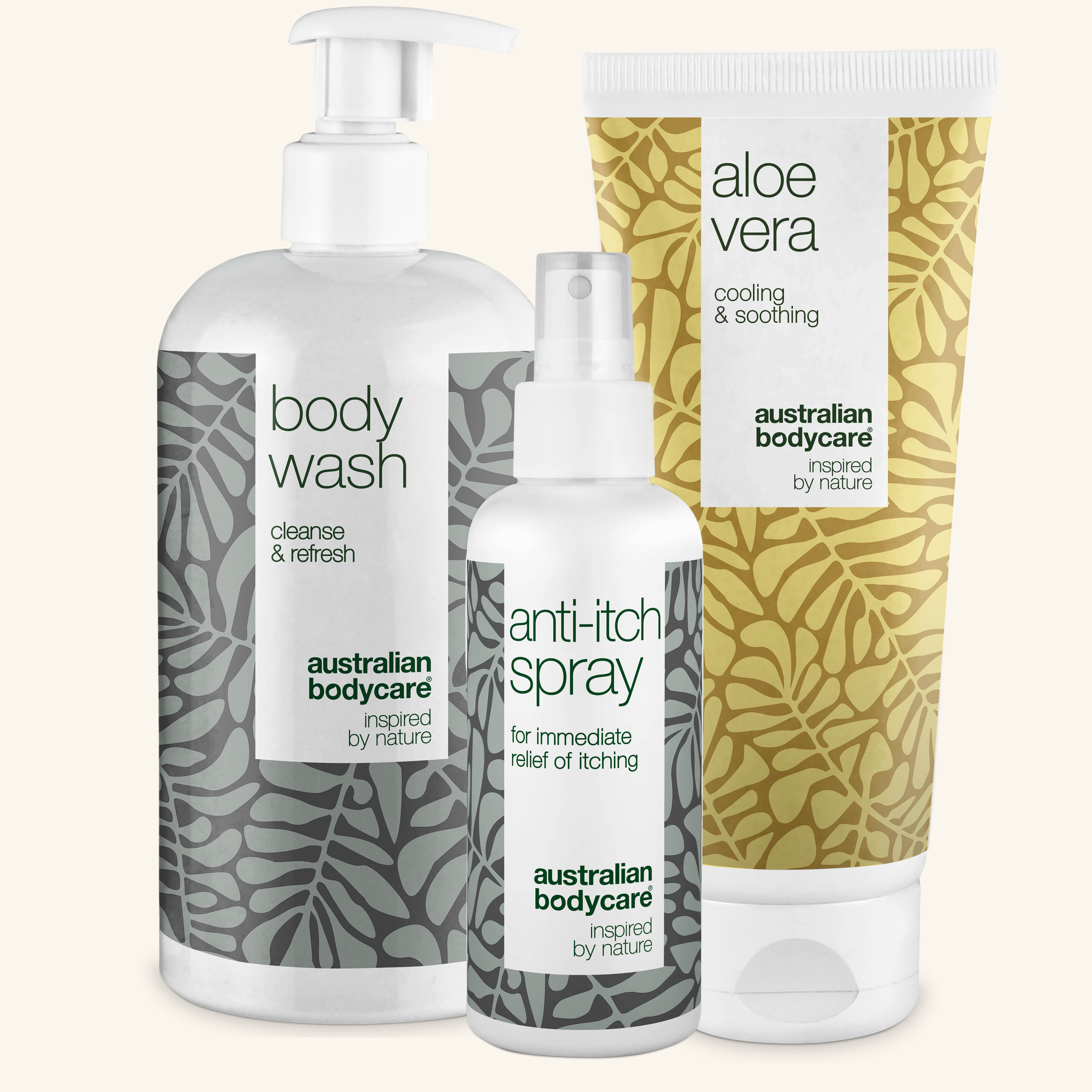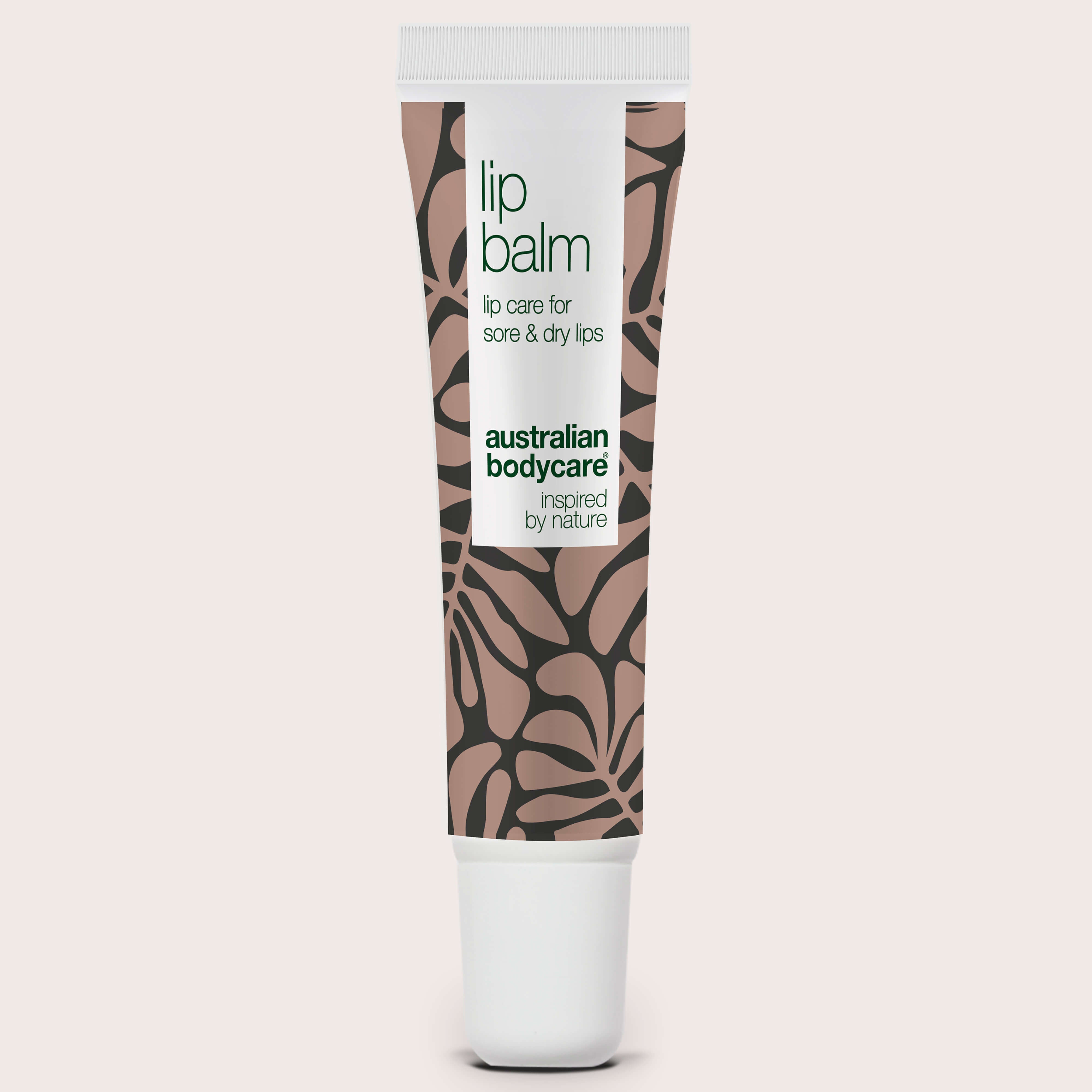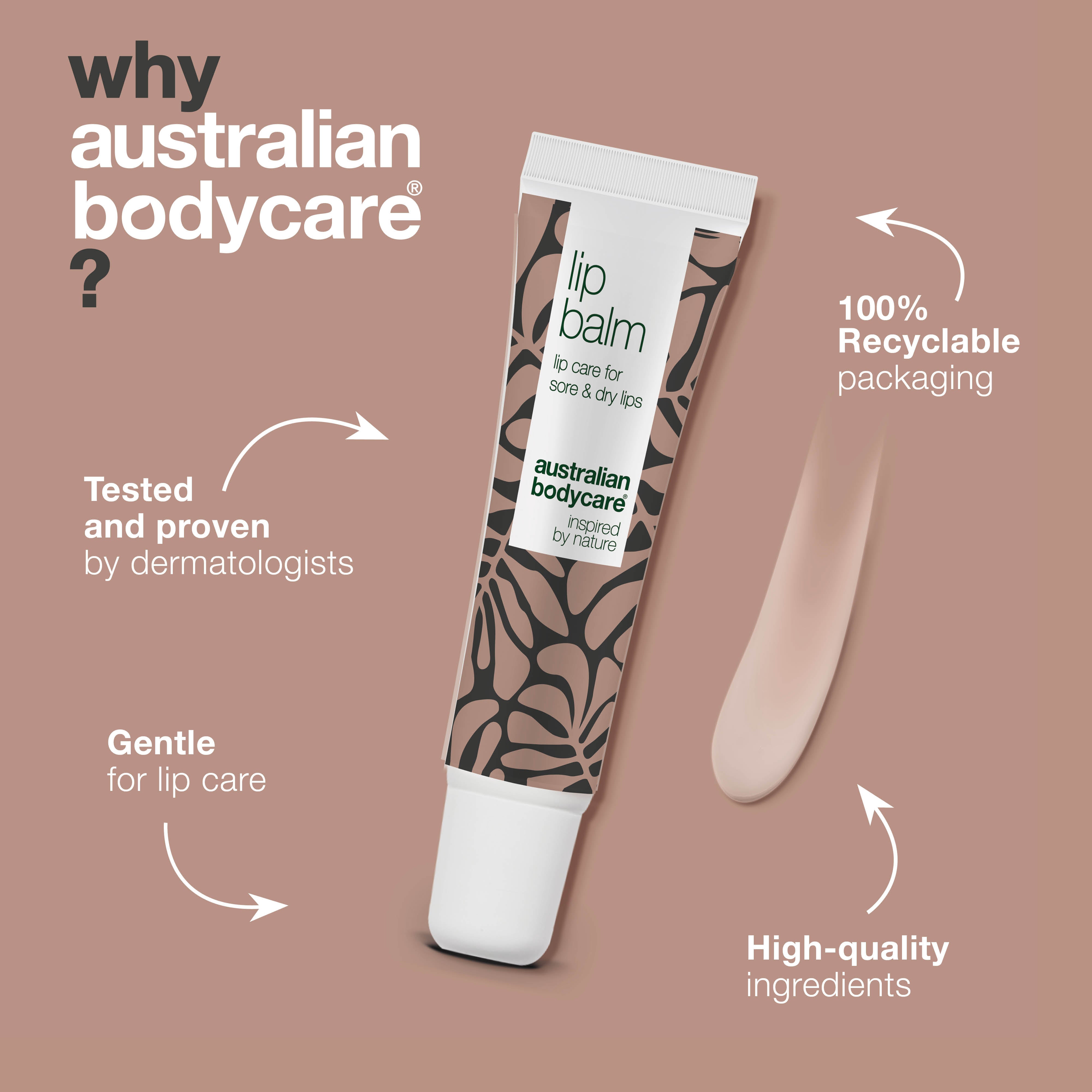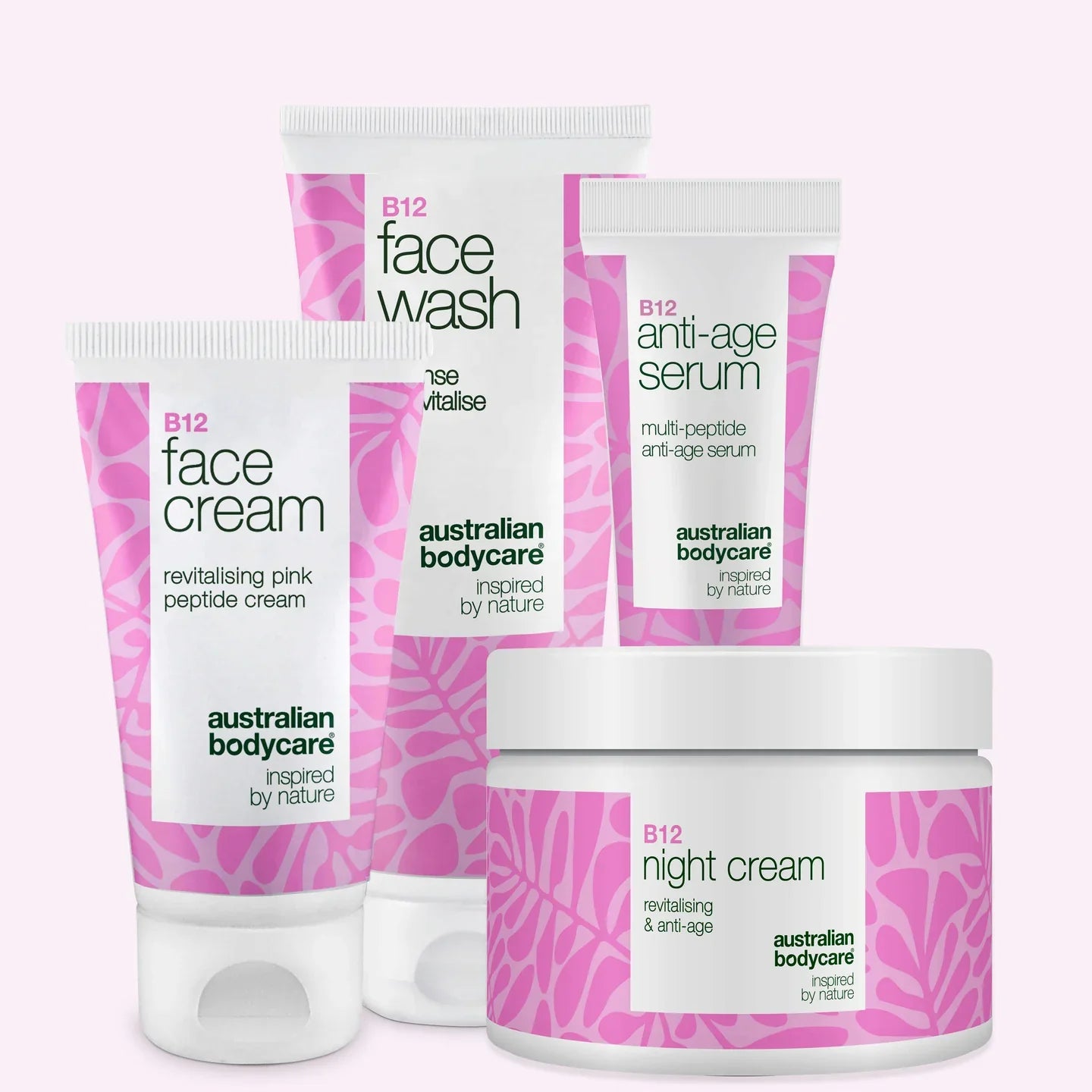Sunburn – A guide to how long it lasts, treatment and prevention
Most of us have had sunburn at some time. Most know, too, that it is not at all good for the skin. The most important thing, then, is to avoid getting sunburnt altogether. But if it happens anyway, it is good to know how to treat sunburn, and when it will clear up.
Table of contents
What is sunburn?
Sunburn is just that – a burn. Ordinary sunburn is classified as a first-degree burn.
Go directly to: Treating sunburn – What helps if you are sunburnt
If you stay in the sun after you have been sunburnt, the burn will become worse, and you can end up with a more severe sunburn, which is classified as a second-degree burn, or even, in extreme cases, as a third-degree burn.
The pigment in the skin acts as a shield against the sun’s rays and the harmful effects of UV rays on the skin. However, the pigment can only protect skin against a certain amount of UV rays. If that amount is exceeded, you get sunburn.
Sunburn is the same as sun inflammation
Sunburn is also called sun inflammation. When the skin becomes sunburned, it is in a state of inflammation. As with all other types of inflammation, the symptoms are itching, stinging, redness and being hot and swollen.
Most of us are familiar with these uncomfortable symptoms, with itching skin that is red, hot and tender after a day with too many hours in the sun. What is so tricky about sunburn is that you do not see or feel anything until after the damage is done.
After more serious sunburn, it is not unusual to have symptoms such as fever, shivering and nausea, and blisters may appear on the skin.
Regardless of the degree of sunburn, you will find that after a few days, the skin peels.
With sunburn, the best you can do is avoid it, which means, quite simply: avoid spending lengthy periods in the sun – and as far as possible, avoid being out in the sun at midday, when the sun is at its highest in the sky.
Of course, it is difficult to entirely avoid spending time in the sun, so when you do venture out in sunshine, it is important always to apply plenty of sun cream.
Treating sunburn – How to get rid of sunburn
Naturally, it is best to avoid getting sunburnt, because once the skin has been sunburnt, it means the damage has already happened.
But if you have been out and got sunburnt, it is useful to know what helps, and what you can do about sunburn to make it less painful.
There is, unfortunately, no instant treatment for sunburn, but here is what you can do to take care of your skin and reduce the discomfort:
- First and foremost, avoid spending more time in the sun.
- Then you can take a long, cool bath. Avoid using the kinds of product on the skin that can irritate it even more. Pat your skin dry carefully afterwards, without rubbing and scrubbing.
- After that you can perhaps continue to cool your skin down by lying with the sunburnt areas on wet sheets or towels.
- Finally, it will be very soothing to apply a generous layer of after-sun lotion. Products with Aloe vera or Tea Tree Oil are known to have a soothing and cooling effect and stop itching – just what is needed after too much sun – so you can choose an after-sun lotion with Aloe Vera or Tea Tree Oil. In addition, creams with Aloe Vera and Tea Tree Oil moisturise the skin and have healing and restorative properties. Especially when the skin is sunburnt, it is important to give it plenty of moisture, so that it does not dry out.
- During the days after getting sunburnt, you can continue to use after-sun lotion, or apply a good, moisturising body lotion and face cream, to keep on giving your skin plenty of moisture. It is an advantage to use creams and lotions containing Aloe Vera gel and Tea Tree Oil, as they are soothing as well as moisturising, and at the same time help to heal and restore the skin.
How can you avoid getting sunburnt?
It varies a lot from person to person how easily they get sunburnt, but in general those with a fair skin cannot spend much time in the sun, or they get sunburnt. Babies and small children get sunburnt more easily than adults.
The season, the time of day and geography also play a part. The harmful UV rays become more intense in the summer and as you approach the equator. The sun’s rays are generally stronger in the middle of the day, between 10 am and 4 pm.
It is best not to sunbathe in the middle of the day; and if you are travelling south, remember that you cannot stay out in the sun for as long as you can at home without damaging your skin.
It is best to accustom your skin gradually to the sun, so you do yourself a big favour if you take it easy on your summer holiday, and do not sunbathe too much the first couple of days.
Short and frequent periods in the sun are much better than staying out for a long time.
Always remember sun cream
No matter where, when or how long you spend time in the sun, you should always use sun cream to protect your skin from the sun's rays, and especially the harmful UV rays.
Choose a sun cream with a high protective factor against UVA and UVB rays. And choose a high-SPF sun cream (SPF = Sun Protection Factor), especially if you have a light skin and are going south for your summer holiday.
Babies and children must always be protected with a high-factor sun cream. In general, babies should not spend time in the sun, and children of any age should not spend too long in the sun.
Besides sun cream, let them wear loose, comfortable clothes, but be aware that clothes only give partial protection. UV rays can penetrate through clothes.
It is important to remember to use sun cream as soon as the first spring sun appears. This is when many people get sunburned, because they ‘forget’ how intense the sun actually is. Remember to use plenty of sun cream, as well.
Far too many people remember the cream, but use too little, and then it is not nearly as effective. You should slather on at least a handful – and do it again at least every three hours. Even more often, if you go in the water now and then.
Remember, in short, if you want to enjoy the sun: protect your eyes with sunglasses, wear a cap or hat to protect your head, and use generous quantities of sun cream, and perhaps light clothing as well, to protect your skin.
Remember to drink plenty of water when you are out in the sun, as you lose a lot of water in the heat.
How long does sunburn last?
Sunburn occurring in a single session will typically last for several days, but the first day will be the worst and most painful. After that it will get better, and the symptoms will disappear gradually. About three days to a week after the sunburn, the skin will begin to peel.
In milder cases of sunburn there is normally no reason to see a doctor. It is usually sufficient to take a cool bath and apply cooling, moisturising cream or after-sun lotion.
On the other hand, you should see a doctor if you have symptoms such as dizziness, nausea, fever, shivering, cold sweat, a rapid pulse, pain in the eyes and/or other severe pain.
Itching associated with sunburn
When the skin is sunburnt, it will often itch or sting and feel uncomfortable. Itching is a very common symptom of conditions with inflammation – and sunburn is, after all, inflammation in the skin.
The most effective treatment for itching is to put plenty of cream on the skin, so that it does not become dry and even more irritated. Using a cream containing Tea Tree Oil or Aloe Vera will not only provide moisture; these two natural remedies are also known to cool and soothe the skin and relieve the itch.
Sunburn on the face
The skin on the face is thinner than the rest of the body, and thus becomes sunburnt more easily. However, there are other places where the skin is extra thin too. These are, for example, over the collar bones and shoulders, and the upper side of the feet. The skin there should be treated like the skin on the face.
It is advisable to use a sun cream with an extra high sun factor on your face.
You can also buy sun creams specially made for your face. If the damage is done, and your face is sunburnt, then you need to cool your face and give it masses of moisture with a good, nourishing cream or after-sun lotion.
Sunburn on the lips
The skin on the lips is thin and delicate, so it is important to remember to protect your lips when you go out in the sun. An ordinary sun cream is not the best thing for your lips. Instead, use a good lip salve with a high factor, and put on a new layer regularly, so that you are well protected from the sun’s rays.
A lip salve with Aloe Vera or Tea Tree Oil is cooling, healing and nurturing as well as protecting you from the sun.
Some people tend to have outbreaks of Herpes (cold sores) on their lips if they get sunburnt, so for them in particular there is an extra reason to prevent sunburn.
Sunburn on the scalp
The scalp is very vulnerable to sunburn, particularly if you are bald or your hair is thin. Then it is important to put sun cream on your scalp, and also protect your head with a hat or cap.
All the same, even if you have plenty of hair, your scalp is still extra exposed to the sun. Since it is difficult to put sun cream on your scalp, it is important to remember your hat or cap when you go out in the sun.
If the problem has already arisen, and you have got sunburnt, the same applies to the scalp as everywhere else: the skin must be cooled down and then treated with soothing and cooling after-sun cream – and you have to ignore the fact that your hair is greasy!
Sunburn and cancer
When it comes to avoiding sunburn, of course, it is not only because it is quite painful to be sunburnt. The worst is that your skin is damaged every time you get sunburnt. While you can soothe the pain and discomfort with creams and other remedies, you can’t undo the damage that has already been done. So it can not be emphasised too strongly how important it is to avoid sunburn.
At worst, the damage to the skin can progress to melanomas or skin cancer. If you have been sunburnt as a child, you have an increased risk of developing cancer.
Generally, the first twenty years are considered the most important with regard to avoiding sunburn, so it is most important to protect children in the sunshine, so they do not get sunburnt.
In fact, just an ordinary tan is enough to damage the skin. It does not have to be actual sunburn to be harmful.
Help for sunburnt skin
Sunburn is neither healthy nor particularly pleasant. But it happens, all the same, and then it is good to know that there are remedies to relieve the pain and discomfort.
When the skin is sunburnt, it helps to cool it down, because sunburn is like any other burn. Next, it is important to give the skin moisture, so that it does not dry out.
If you use a cream or after-sun lotion containing Aloe Vera gel and Tea Tree Oil, you will not only get plenty of moisture, but it will also cool and soothe the skin and relieve the itching, which are some of the painful and uncomfortable symptoms that come with sunburn.
FAQ about sunburn
What helps against sunburn?
The most important advice when it comes to sunburn is to enjoy the sun in moderation. That means short periods in the sun, wearing light clothing, a hat or cap on your head and sunglasses to protect your eyes. But when the damage is done, the best you can do is to cool the skin and then give it lots of moisture, so it does not dry out. Preferably, choose an after-sun lotion that also cools, soothes and relieves itching. For example, use a product containing Aloe Vera and Tea Tree Oil.
How can I get rid of sunburn?
There is no instant cure that gets rid of sunburn. It takes time before the skin is back to normal. In the meantime, you can soothe the pain with cooling baths and giving the skin moisture in the form of a good, nurturing after-sun lotion that soothes, cools and stops itching.
How long does sunburn last?
If you are sunburnt, the first twenty-four hours are always the worst and most uncomfortable. After that, it will gradually get better, but it will normally be several days before the pain and discomfort are completely gone. About three days to a week after the sunburn, the skin will begin to peel.









